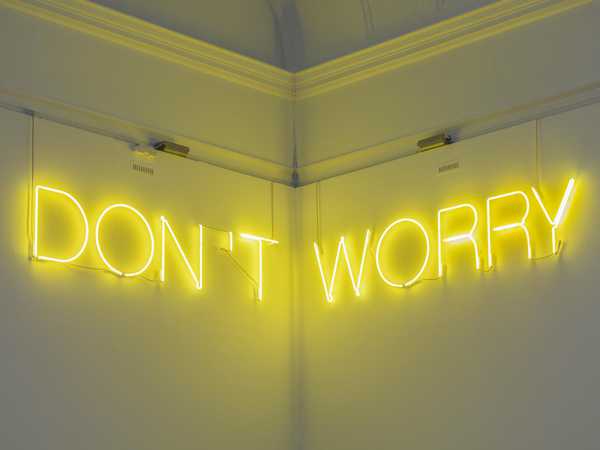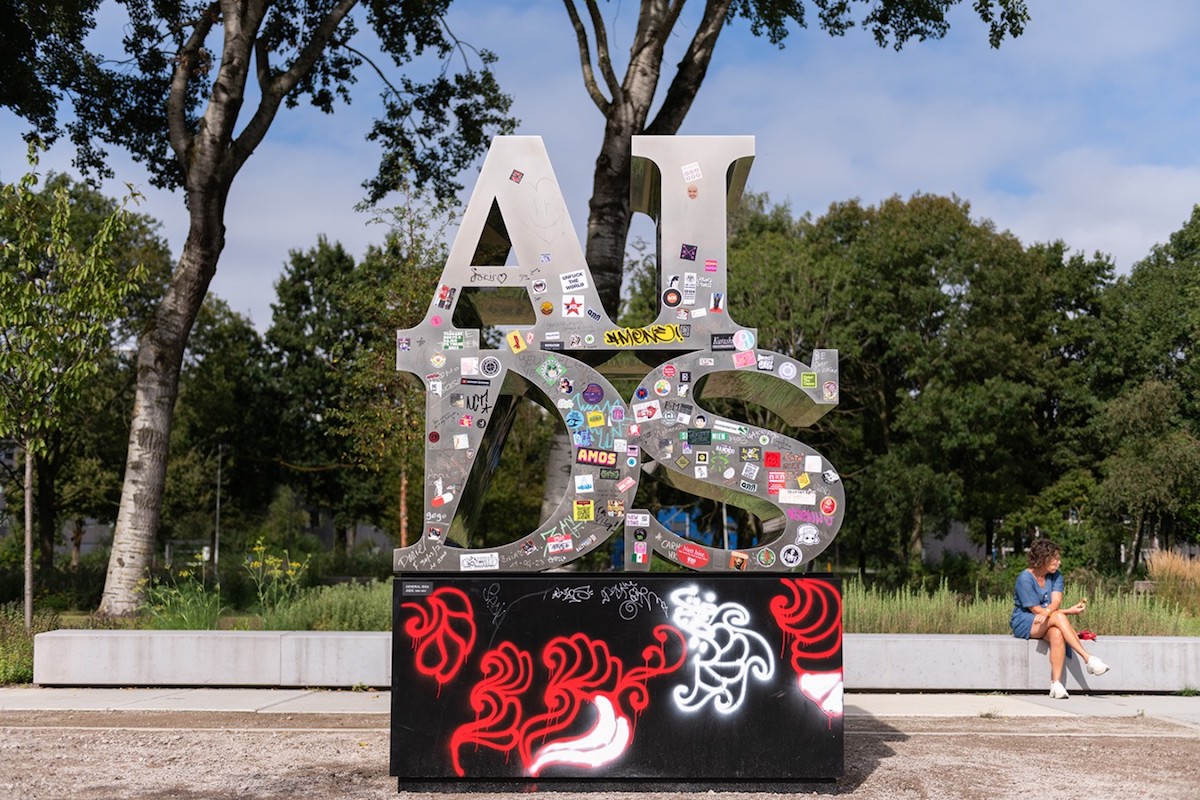The Left Hand Can't See That the Right Hand is Blind
2004 - Film & Video (Film & Video)
12:14 minutes
Douglas Gordon
Douglas Gordon’s single-channel video The Left Hand Can’t See That The Right Hand is Blind, captures an unfolding scene between two hands in leather gloves—at first seemingly comfortable to be entwined, and later, engaged in a struggle. As suggested by the work’s title, each of the hands assumes a character with a distinct personality, as if we were witnessing a lovers’ quarrel and embrace, or the embodiment of opposing forces of an internal struggle. Gordon has previously created performance-based works depicting his own body or parts of it—arms, hands, fingers, eyes—usually enacting simple, repetitive movements. Hands, in particular, have held his interest due to their ability to evoke internal emotional states and express aspects of identity, sexuality, fetishism and even our ability to communicate. These characterizations suggested by simple movements reflect his ongoing interest in notions of the ego, and internal struggles—and are illustrative of the formal techniques of doubling and mirroring, which can be seen in several of his works.
Douglas Gordon is a celebrated Scottish artist whose work revolves around the themes of memory, time and our perception of it. Spanning across film, video, installation, photography, and sculpture, his work offers a new experience of the cinematic in the space of contemporary art, creating what critic Dominique Païni described as ‘exhibition cinema.’ Interested in how we experience temporality, Gordon has often slowed down either original or appropriated footage in order to play with the viewers’ perception. An example is his celebrated work 24 Hour Psycho (1993) , in which Gordon stretched the duration of Alfred Hitchcock’s iconic movie to last 24 hours. This gesture both monumentalized time and intensified the imagery, structurally reframing the film by shifting our perception away from the movie’s original narrative and directing it towards the finer details that constitute every single frame. Several of his works incorporate that universal dichotomies: of life and death, innocence and guilt, and dual identities. Harboring the tension between opposing forces, Gordon then employs formal strategies of repetition, mirroring, and doubling to construct a deliberate ambiguity and multiplicity of meaning.
Colors:
Related works of genres: » young british artists, » contemporary artist, » scottish contemporary artists, » photography, » neo-conceptual art, » video installation, » video art, » appropriation art, » born 1966, » relational art

© » KADIST
Martin Creed
2003This photograph of Martin Creed himself was used as the invitation card for a fundraising auction of works on paper at Christie’s South Kensington in support of Camden Arts Centre’s first year in a refurbished building in 2005...

© » TATE EXHIBITIONS
Martin Creed
Martin Creed | The Dick Institute Experience the work of one of this country’s most ingenious, audacious and surprising artists at the Dick Institute ARTIST ROOMS Martin Creed presents highlights from the British artist’s thirty-year career...

© » KADIST
Gabriel Orozco
1992Gabriel Orozco often documents found situations in the natural or urban landscape...

© » KADIST
Gabriel Orozco
1994Charco portátil congelado (Frozen Portable Puddle, 1994) is a photographic record of an installation of the same name that Gabriel Orozco made at Witte de With Center for Contemporary Art in Rotterdam for the group exhibition WATT (1994)...

© » ARTLYST
General Idea
Following its display at the General Idea retrospective in Stedelijk Museum Amsterdam The post AIDS Sculpture By General Idea Finds Permanent Home In Amsterdam Park appeared first on Artlyst ....

© » KADIST
Sebastián Díaz Morales
2012Pasajes I is the first in a series of Sebastián Díaz Morales’s four videos Pasajes , which focuses on a solitary man walking through Buenos Aires...

© » KADIST
Jonathan Monk
2003Untitled (rolled up) , is an abstract portrait of Owen Monk, the artist’s father and features an aluminum ring of 56.6 cm in diameter measuring 1.77 cm in circumference, the size of his father...

© » KADIST
Harun Farocki
2009For Immersion , Harun Farocki went to visit a research centre near Seattle specialized in the development of virtual realities and computer simulations...

© » KADIST
Simon Starling
2007Invited in 2007 to the Museum Folkwang in Essen (Germany), Simon Starling questioned its history: known for its collections and particularly for its early engagement in favor of modern art (including the acquisition and exhibition of works by Cézanne, Gauguin, Van Gogh, Matisse), then destroyed during the Second World War, the museum was pillaged for its masterpieces of ‘degenerate art’ by the nazis...

© » KADIST
Martin Kippenberger
1988Martin Kippenberger’s late collages are known for incorporating a wide range of materials, from polaroids and magazine clips to hotel stationery, decals, and graphite drawings...

© » KADIST
Allan McCollum
1982In the work titled The Glossies (1980), an affinity for photography manifested itself before McCollum actually began to use photography as a medium...

© » KADIST
Gabriel Orozco
2002Gabriel Orozco comments: “In the exhibition [Documenta 11, Kassel, 2002], I tried to connect with the photographs I took in Mali in July...

© » KADIST
Doug Aitken
2009The version of Frontier acquired by the Kadist Collection consists of a single-channel video, adapted from the monumental installation and performance that Aitken presented in Rome, by the Tiber River, in 2009...

© » KADIST
Anthony McCall
1974This score is a graphic record of the detailed choreography of one of Anthony McCall’s Landscape for Fire performances...






